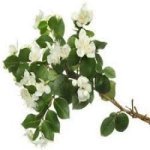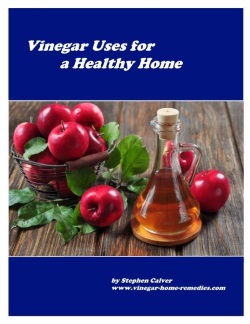There is treasure to be desired and
oil in the dwelling of the wise. Proverbs 21:20
Blending Essential Oils

Been using oils for awhile? Maybe it's time to try your hand at blending essential oils so they can go to work in synergy addressing a given illness or condition.
- For proven blend suggestions check out Page 1 & Page 2
- To create your own formula please continue reading
Your supplier has probably been blending essential oils for most of your uses but occasionally you may not be able to find one that addresses your unique situation, or their blend may contain oils that you are not able to take.
Whatever your reason, you have decided to develop a blend that works for you, so let's cover some questions you may have ...
Our website is made possible by displaying online advertisements to our visitors. Please consider supporting us by disabling your ad blocker.
What are Notes?
The term "notes" was coined by the 19 century French perfumer Pliesse to describe the three different attributes of essential oils.
When blending essential oils it is important that you identify which "note" applies to each ingredient oil because each "note" affects the blend differently.
Top Notes
If you want to make a blend but prefer to follow a proven recipe check out my page at Oil Blends
Top note oils are usually the first thing you sense and typically have anti-viral properties.
Oils like cinnamon, lemongrass, peppermint and thyme are recognizable by their sharp odours which can come on strong initially but tend to fade quickly as they evaporate.
This "flash-in-the-pan" nature makes them popular because the smell doesn't linger and offend others as you go about your day. Unfortunately, their strong odour can overtake other oils in the blend so typically these oils may only form 2 - 5% of your blend.
Other top note oils like the citrus oils can be used more extensively and can compose up to 40% of the blend although typically you should stop at the 20% mark.
Middle Notes
Middle Note oils form the heart of the blend and are normally warm and soft fragrances. Although they take up 50-80% of the blend, they are usually not immediately detectable but will make their presence known as the Top Note oils subside.
Middle Notes, such as chamomile, lavender and marjoram, are known as enhancers.
Base Notes
Base Notes are rich and heavy and they usually have strong, long lasting fragrances. They are the last to be noticed but they act as a fixative to increase the duration of the Top Notes.
Blends designed to be defused do not usually require Base notes as they are more effective when applied on your skin. When applied to your skin they seem to "come alive" and that is when you will really notice them.
Base notes tend to be the most expensive oils.
Some Notes May Change
Depending on who you are getting your information from, there may be some disagreement on the category to be assigned to some oils.
This can be the case when an oil is very close to the borderline between notes.
The growing conditions and climate can also be a factor in nudging an oil across from one category to the next.
Don't let this concern you when you are blending essential oils. Be adventurous and experiment with your blends to find what works best for you.
The following chart can be used to assist in blending essential oils to formulate the perfect blend. You may have to play around with the various oils to develop a blend that works for you but it is well worth the effort. (Instructions follow the chart below)
|
OIL |
STRENGTH |
NOTES |
USE OF |
USE OF |
|
3 |
Middle |
>50% |
|
|
3 |
Top |
<20% |
|
|
Birch |
4 |
Base |
<30% |
|
|
3 |
Middle> |
50% |
Small Amts |
|
3 |
Top |
<20% |
|
|
Camphor |
4 |
Middle |
>50% |
Small Amts |
|
Chinese Spearmint |
3 |
Top |
<20% |
|
|
5 |
Top |
<20% |
|
|
3 |
Top |
<20% |
|
|
3 |
Middle & Base |
>80% |
|
|
5 |
Middle |
>50% |
|
|
5 |
Base |
<30% |
|
|
3 |
Middle |
>50% |
|
|
3 |
Middle |
>50% |
|
|
5 |
Top |
<20% |
|
|
3 |
Middle |
>50% |
|
|
3 |
Base |
<30% |
|
|
3 |
Middle |
>50% |
|
|
4 |
Middle |
>50% |
|
|
2 |
Top |
<20% |
|
|
3 |
Middle |
>50% |
|
|
3 |
Middle |
>50% |
|
|
3 |
Top & Middle |
>70% |
|
|
3 |
Top |
<20% |
|
|
Lemon Verbena |
2 |
Top |
<20% |
|
|
4 |
Top |
<20% |
|
|
Lime |
3 |
Top |
<20% |
|
|
3 |
Middle> |
50% |
|
|
Mugwort |
5 |
Middle & Base |
>80% |
|
|
3 |
Top & Middle |
>70% |
|
|
3 |
Middle |
>50% |
|
|
1 |
Top |
<20% |
|
|
5 |
Middle |
>50% |
Small Amts |
|
5 |
Top |
<20% |
|
|
4 |
Middle |
>50% |
|
|
Ravintsara |
4 |
Middle |
>50% |
|
|
4 |
Middle |
>50% |
|
|
3 |
Middle |
>50% |
|
|
3 |
Middle |
>50% |
|
|
4 |
Middle |
>50% |
|
|
3 |
Base |
<30% |
|
|
3 |
Middle |
>50% |
|
|
4 |
Top & Middle |
>70% |
|
|
3 |
Top |
<20% |
|
|
3 |
Middle |
>50% |
|
|
4 |
Top |
<20% |
|
|
2 |
Middle |
>50% |
|
|
Vanilla |
5 |
Middle |
>50% |
<2%-5% |
|
Vanilla |
5 |
Base |
<30% |
<2%-5% |
|
5 |
Base |
<30% |
Small Amts |
|
Virginial Cedarwood |
3 |
Middle |
>50% |
|
|
5 |
Middle & Base |
>80% |
|
|
5 |
Middle & Base |
>80% |
Small Amts |
Using the Chart for Blending Essential Oils
Take the following steps to identify which oils to include in your blend:
Blending Tips
When blending essential oils fewer ingredients is preferred to more. Try restricting your choice of oils to three if possible.
- Determine how you will be using the blend. (massage, diffuse or internal consumption) Keep this in mind as you select the oils in step #2.
- Using this site, identify the individual oils that work on the condition you wish to address, and in the manner identified in Step #1. (example: Wintergreen should not be included if you intend to consume the blend)
- Check out the page on each ingredient to see which oils work well together. (you will find this information at the bottom of each page)
- Try to select the oils that appear to work best with each other. This should reduce the total number considerably
- Once you have made your list, use the chart to group them into the various notes and place them in order of percentage of the blend. (example: Middle notes should form over 50% of the blend)
- Identify the oils that should be in small amounts even though they are located in a larger percentage of the total blend.
- Decide on the volume of your blend. For ease of calculation I recommend using 100 drops total. You can then assign the numbers to each group ( example: "Middle" = 50+ drops, "Top" = 20 or less drops, etc.) Adding them all up should give you the total of 100 drops.
- Delete any oils that you should avoid due to allergies or health conditions.
- Delete some of the oils that make step #7 difficult to complete. This is where you can eliminate oils that you don't like or don't have.
- Divide the total drops for each group between the individual oils in the group. I suggest no more than 20 drops of any one oil. If that means you won't be able to make the 100 drop target then either reduce your total or increase each oil proportionately.
- Allow your blend 24 hours to "set" before your first test. The individual oils need some time to mix.
After completing the above steps you should have a blend consisting of 100 drops. If the numbers work and you wish to start with less than 100 drops you can modify the blend by reducing each ingredient by a fixed percentage. For example if all your numbers are even numbers, you can reduce each ingredient by 50%.
Play around with the blend till you have something that is workable for you, then try it out.
The great thing about blending essential oils is that you don't have to worry about one oil interfering with the results of another, unlike medications which can have some very serious implications.
Remember to keeps notes on each of your attempts so you can grade them and repeat or modify future blends.
Blending essential oils can be very rewarding, especially when you come up with your own "signature" blend.
Enjoy and have fun.
*** Please Share Your Comments Below! ***
Where Can I Get These Oils?

I don't sell oils but here are my
recommended sources.
The companies I use and recommend guarantee the quality of their oils and I believe you will be satisfied with all your purchases, I am.
If you have any questions/concerns feel free to contact me.
Return to Essential Oil Remedies Home Page
Return to List of Essential Oils featured on this site
Return to List of Ailments/Conditions discussed on this site
Return to Essential Oil Accessories shopping
Way Beyond Air Filtration
FDA-Compliant Military
Lab Tests show:

ActivePure Technology® Eliminates 99.9% of Airborne
SARS-CoV-2 Virus
Within 3 Minutes in FDA-Compliant Military Lab Tests
+ Sanitize Surfaces
Purifies both Air and Surfaces
Watch Video
Essential Oil Diffusers
Inhalers
Essential Oil Books


















New! Comments
Have your say about what you just read! Leave me a comment in the box below.